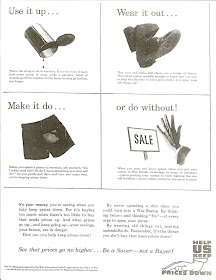 The environment has been a hot topic in the last few years, and the Library Commission has recently added more books on this subject. For example, we have The Green Revolution by Ralph McInerny and Hot, Flat, and Crowded: Why We Need a Green Revolution--and How it Can Renew America by Thomas Friedman.
The environment has been a hot topic in the last few years, and the Library Commission has recently added more books on this subject. For example, we have The Green Revolution by Ralph McInerny and Hot, Flat, and Crowded: Why We Need a Green Revolution--and How it Can Renew America by Thomas Friedman.The future of Mother Earth seems to be on everyone’s mind. I know there’s more that I could be doing to be environmentally friendly in my own life, but sometimes all the information about going green can be overwhelming!
From reading the books we have in our collection, I’m learning that it doesn’t have to be so hard. Here a few simple things you and I can do to “go green,” from 50 plus One Tips for Going Green by Alicia Smith.
- Give away things you don’t need anymore, instead of throwing them away. One website I have used in the past is www.freecycling.org. You can claim items people are giving away or post things you want to get rid of that someone else might use.
- To save gas, keep your car tires inflated and aligned. Also, remove unnecessary items from the car.
- Take shorter showers.
- Turn off the computer monitor if you’ll be away for over 20 minutes, and turn off the computer if you’ll be gone for over 2 hours.
- Don’t print documents or emails unless absolutely necessary.
- At work, take the stairs instead of the elevator.
- Use a microwave to reheat food instead of the oven.
- Unplug appliances when they are not in use.
- Reuse a washable water bottle, instead of buying bottled water. (This is the one I really need to do!)
In addition, you can participate in Earth Hour on March 28. All around the globe, folks will be turning off their lights for one hour starting at 8:30 local time. Some of the places going dark include the Sydney Opera House, the New York Public Library, the Eiffel Tower, and the Coca-Cola billboard in Times Square.
Have questions about how to be more kind to the environment? Let us help!
Reference:
Smith, Alicia Marie. 50 Plus One Tips for Going Green. New York: Encouragement Press Llc, 2008.

 The
The 
 It was prepared by the War Advertising Council and appeared in the June 5, 1944 issue of Life Magazine. The War Advertising Council was founded in 1941, and is now known as simply the “Ad Council.” The War Advertising Council campaigned during WWII to encourage Americans to buy war bonds and do other things to support the war effort, including conservation of money and resources.
It was prepared by the War Advertising Council and appeared in the June 5, 1944 issue of Life Magazine. The War Advertising Council was founded in 1941, and is now known as simply the “Ad Council.” The War Advertising Council campaigned during WWII to encourage Americans to buy war bonds and do other things to support the war effort, including conservation of money and resources.